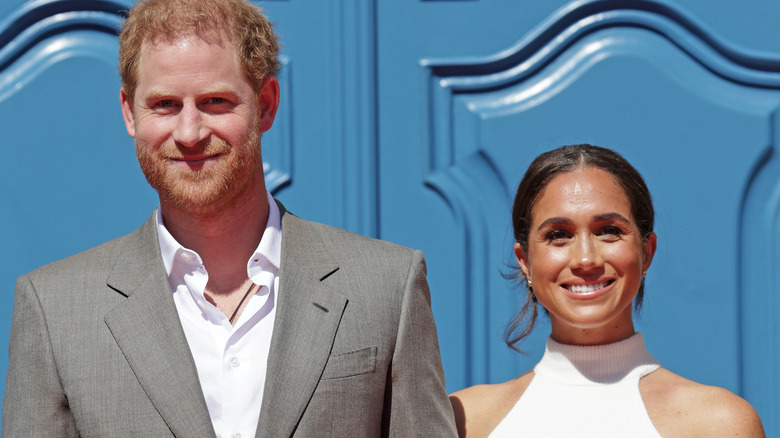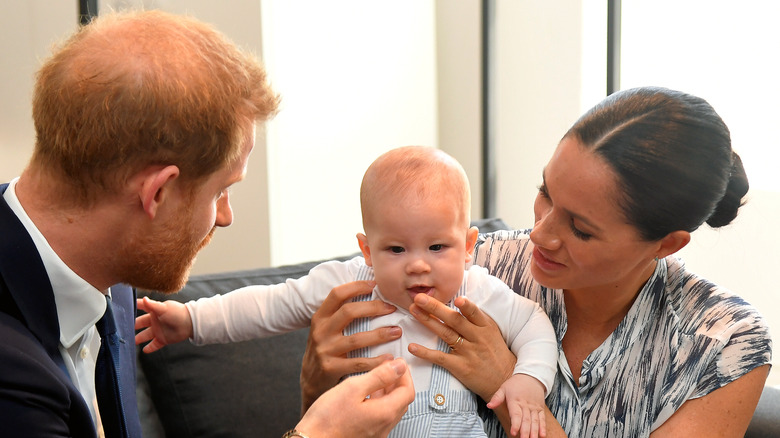Archie And Lilibet's Title Change Reportedly Dates Back To Charles' Coronation
Prince Harry and Meghan Markle, Duke and Duchess of Sussex, have been making all kinds of big announcements. Just before the royal couple traveled to Canada to appear at the Invictus Games Vancouver Whistler 2025's One Year to Go event, Harry and Meghan rebranded their website, Sussex.com features a new logo, along with the coat of arms Meghan received when she married Harry in 2018. The new website also celebrates a personal change within their family: Prince Archie and Princess Lilibet now have the last name Sussex — just like their parents. Archie and Lilibet's last name was previously Mountbatten-Windsor. Even though the change was only recently revealed, it's apparently been in use since May 2023. "The family have, since the King's Coronation, the same surname for the first time," a source explained to The Times. "It represents their unification, and it's a proud moment." Archie and Lilibet's last names have also been updated on the royal family's official website.
This is the second big title change for the Sussex kids in less than a year. In March 2023, Harry and Meghan revealed that Archie and Lilibet were now using their royal prince and princess titles when they announced Lilibet's christening. This title change officially occurred when King Charles acceded to the throne in September 2022. In accordance with a 1917 decree by King George V, Archie and Lilibet became eligible for prince and princess titles as grandchildren of the monarch.
Archie and Lilbet's new last name follows a royal tradition
Now that Prince Archie and Princess Lilibet are officially Sussexes, no royals are using the Mountbatten-Windsor last name. However, as royal parents' titles change, they typically change their kids' last names to match. When William, Prince of Wales, and Prince Harry, Duke of Sussex, were children and young adults, they used the last name Wales since King Charles was Prince of Wales at the time. After William married Catherine, Princess of Wales, they were given the titles Duke and Duchess of Cambridge, and they used the Cambridge title as a family last name. After Charles ascended the throne when Queen Elizabeth died, William changed his last name from Cambridge back to Wales when he received his dad's former title. Prince George, Princess Charlotte, and Prince Louis' last names were then changed to match their parents.
Change seems to be a constant with royal last names. King George V, Elizabeth's grandfather, originated the Windsor last name after WWI as a PR decision to update the family's previously German name, Saxe-Coburg-Gotha. George then declared this new name could be used by all male or unmarried female descendants of the monarch. In 1960, Queen Elizabeth and Prince Philip hyphenated their two last names to create Mountbatten-Windsor as a unique last name for their direct descendants. Philip himself took the Mountbatten surname in conjunction with his 1947 British citizenship. Mountbatten-Windsor will likely be used in the future for William's grandchildren after he accedes the throne.

